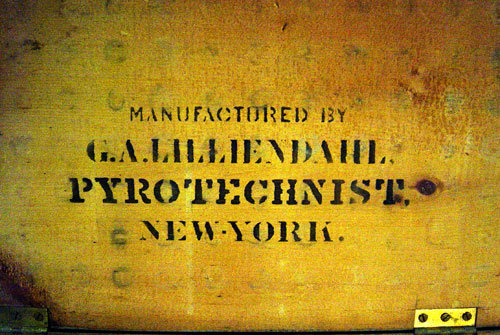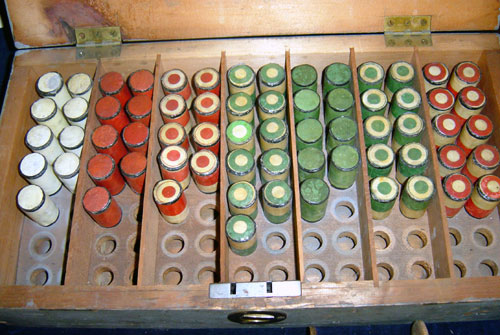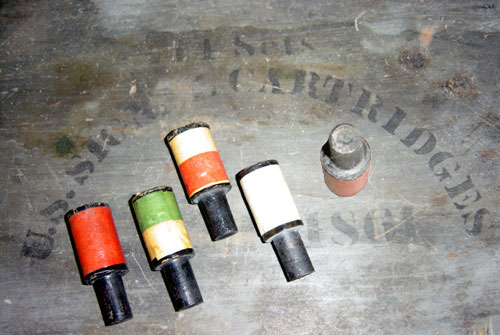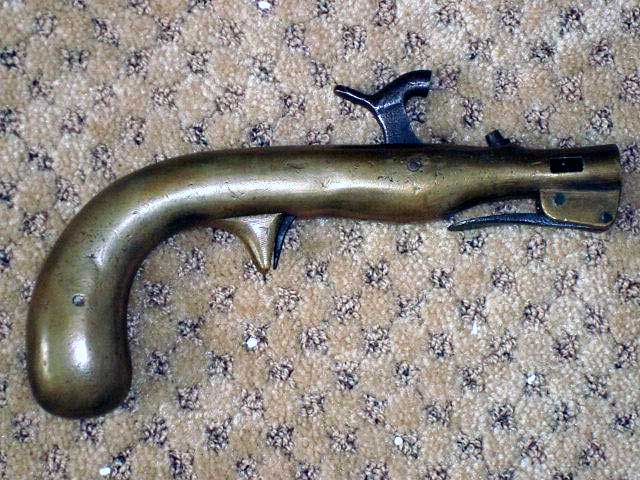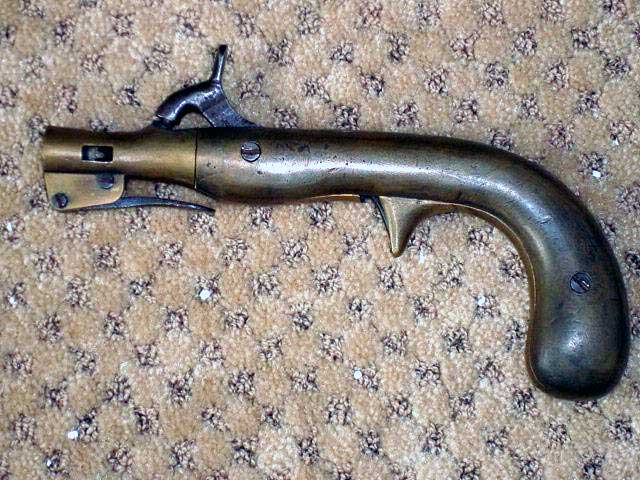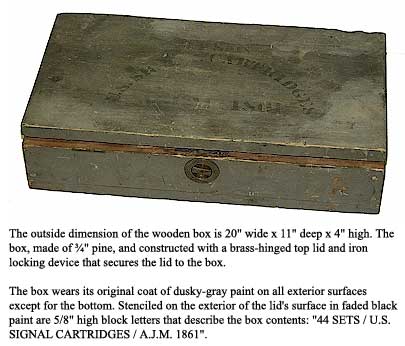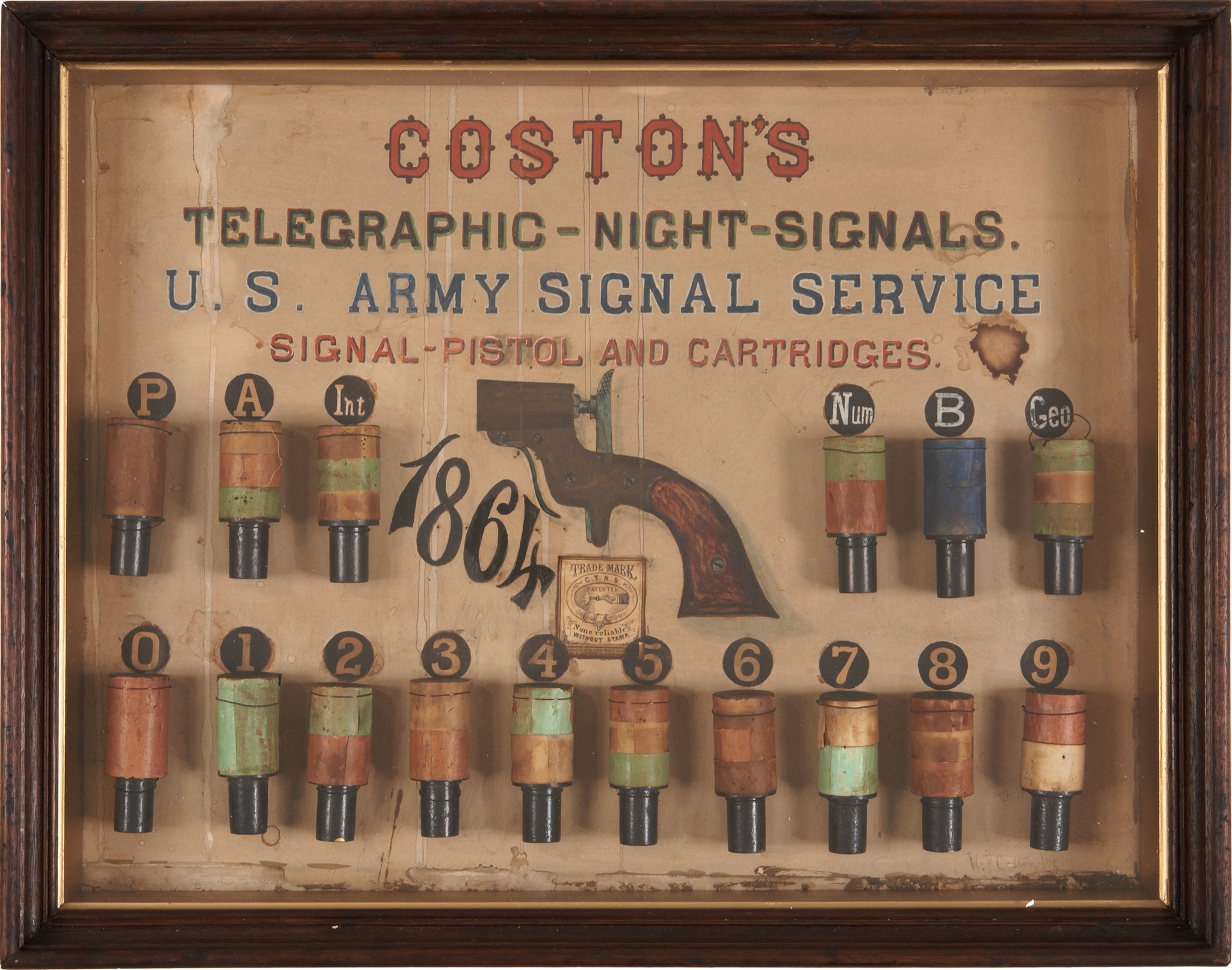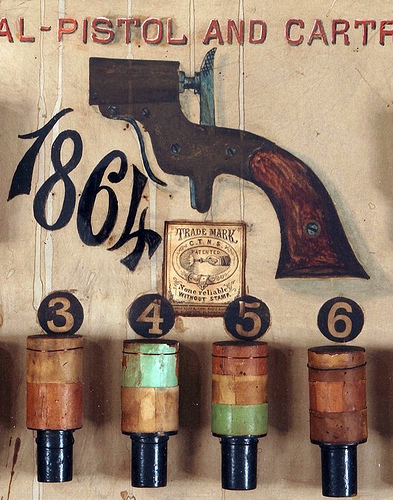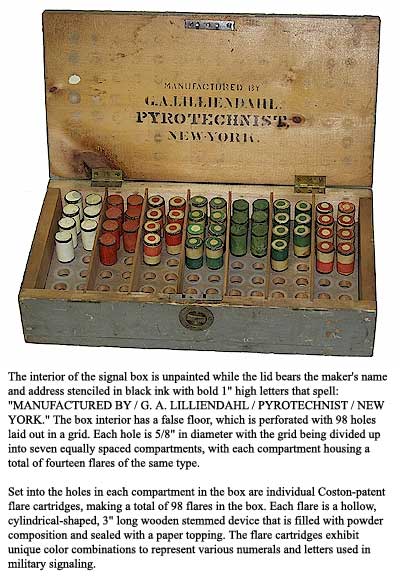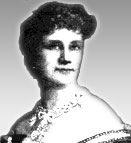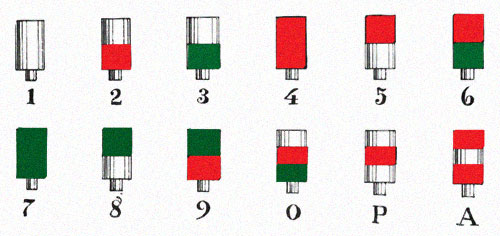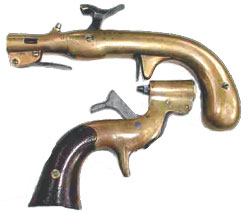This is a very ingenious and effective semaphore, which commends itself
from its simplicity. Three lights of different colors, white, red, and green,
are so flashed or burned in combinations representing the numerals 1, 2, 3,
4, 5, 6, 7, 8, 9, 0, and also two letters A and P —in all twelve combinations.
The light is produced by the combustion of a peculiar pyrotechnic composition
for each of the desired colors. A handle or holder is all that is necessary,
ordinarily, to hold the selected color:
|
A flash of white indicates the numeral | 1 |
| A flash of white followed by red | 2 |
| A flash of white followed by green | 3 |
| A flash of red | 4 |
| A flash of red followed by white | 5 |
| A flash of red followed by green | 6 |
| A flash of green | 7 |
| A flash of green followed by white | 8 |
| A flash of green followed by red | 9 |
| A flash of white, red, and green | 0 |
| A flash of white, red, and white | P |
| A flash of red, white;, and red | A
|
|
|
|

| P . 2 . 9 . 3 . A | |
|
When a communication is to be made, the white, red, and white are, quickly
and successively flashed, indicating the letter P, (prepare, [or preparatory])
and, when answered by red, white, and red, indicating the letter A [assent];
the correspondence commences by flashing the respective colors of the numbers
desired to be sent. Experience has demonstrated the usefulness of the "Coston
Fire Signals," and they have passed the practical test with success."
~ S.F.B. Morse
Martha Coston was born in Baltimore, in 1826. She was widowed at age twenty one and was left with four children to take care of. Even though her husband had died, she was determined to work and earn money.
In 1859, she came up with an idea of a signal flare, based upon on her deceased husband's notebook. Since the plans of her husband's didn't work, she was determined to find a successful way to make the signal flare to work.
Signal flares were very hard to make, they had to be both durable and simple. They also needed to last long enough to be viewed from ship to ship or ship to land communications. The flare also had to be simple enough to use and in colored combinations.
Martha soon discovered that she could use pyrotechnics to make her flare. The green, red, and white flares worked so well that the navy bought them from her for $20,000.
COMPOSITION FIRES
Composition Fires are pyrotechnic compositions which burn with great intensity of light and color. The colors, red, white, and green, are found to be best suited for signalling. A very convenient arrangement is as follows:
These signals prepared in the form of cartridges, are burned from a holder. The signals while burning will show the colors and correspond with the numbers above indicated.
P or White~Red~White, is the challenge or preparatory signal; if answered by the A or Red~White~Red, it shows that the preparatory signal was seen. If it is then desired to send the message indicated by 2-9-3, the cartridges are discharged corresponding with those numbers (as illistrated in the code example above).
A signalist should be careful not to look at the brilliant flame of the signal burning near him, as thereby the eye is not fitted to discern accurately the colors of distant lights.
The signal cartridges are made to be fired by the explosion of the percussion cap upon the signal-pistol. The colors of the cartridges are indicated by the colors painted on the outside of the cases or shells.
If the signalist be provided with only three kinds of lights, as red, white, and green, he can indicate nine different messages by burning one or two cartridges. By burning three or less than three at one time, tewnty-seven messages can be sent; by burning four or less, eighty-one messages. If four lights are furnished, as a red, a white, a green and a red-white, the same number of cartridges will furnish sixteen, sixty-four, and two hundred and fifty-six messages, respectively.
If five are used the number is increased to one thousand and twenty-four!
| EXAMPLE CODE |
| (Let the colors used be Red, White, Green, indicating the numbers 1,2,3 respectively) |
| 1 | Are you ready | 23 | Fire over our heads |
| 21 | I am ready | 31 | Cease Firing |
| 3 | Repeat | 32 | Shell to our right |
| 11 | Enemy to our front | 33 | Shell to our left |
| 12 | Enemy to our left | 111 | Shells fire over enemy |
| 13 | Enemy to our right | 112 | Shells fire to short |
| 21 | Send troops to our left | 113 | Gunboats cover our retreat |
| 22 | Send troops to our right | etc. | etc., etc. |
|
